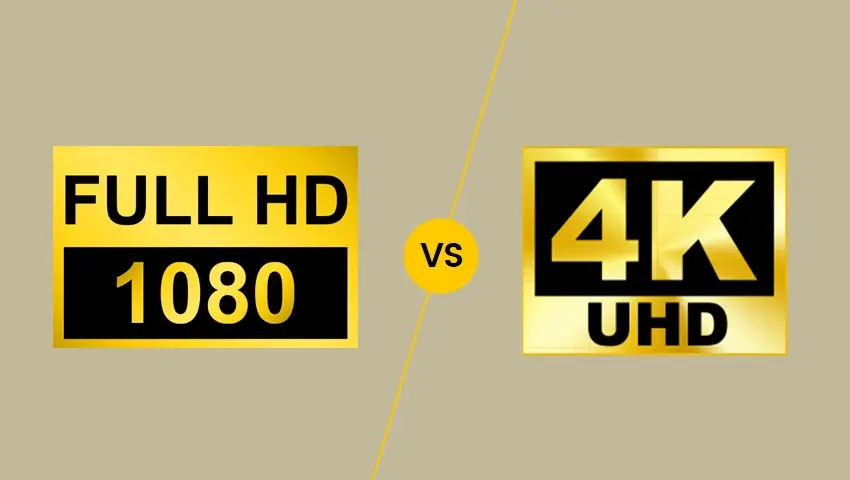Understanding the differences between FHD and HD is crucial for making informed decisions about your display technology and visual experience. The debate between FHD and HD resolutions has become a key consideration for anyone looking to upgrade their digital display. With FHD offering four times the pixel count of HD, it’s clear that resolution plays a crucial role in the quality of the image displayed on our screens. This article explores the differences between these two resolutions and helps you understand which might be the better option for your needs.
Contents
What are the features of FHD and HD
1. FHD (Full High Definition)
FHD, or Full High Definition, is a term that has become synonymous with high-quality displays. It typically refers to a resolution of 1920×1080 pixels, which is four times the resolution of the standard HD. This means that FHD packs more pixels into the same screen area, resulting in a sharper and more detailed image.
- Definition and Standards: The standard for FHD is set by its pixel count, with 1920 pixels horizontally and 1080 pixels vertically. This resolution is also known as 1080p, with the “p” standing for progressive scan, which means that all lines of a frame are drawn in one pass. This results in a smoother image, especially during fast motion scenes.
- Pixel Density: Pixel density, measured in pixels per inch (PPI), is a crucial aspect of display quality. A higher PPI means more pixels are packed into a given space, leading to a sharper image. FHD displays usually have a higher PPI than HD, which contributes to their ability to display more intricate details and finer text.
- Applications: FHD is most beneficial in applications where high image quality is paramount. Gaming enthusiasts appreciate the detailed graphics and smooth motion that FHD provides. Video editors require the clarity to make precise cuts and color corrections. For high-quality streaming, FHD ensures that the content looks crisp and clear, even on larger screens.
2. HD (High Definition)
HD, or High Definition, is a term that has been around for a while and is often associated with a resolution of 1280×720 pixels. While it may not offer the same level of detail as FHD, HD is still a popular choice for many due to its balance between quality and affordability.
- Definition and Standards: HD is defined by its resolution of 1280×720 pixels, which is also known as 720p. The “p” here also stands for progressive scan, ensuring a smooth image display. While HD does not offer the same pixel density as FHD, it is still considered a significant upgrade from the older standard definition (SD) resolutions.
- Pixel Density: Compared to FHD, HD has a lower pixel density, which means that images may appear less sharp, especially on larger screens. However, for smaller screens or at a greater viewing distance, the difference may not be as noticeable.
- Applications: HD is sufficient for many everyday tasks. Standard streaming services often provide content in HD, which is more than adequate for most viewers. Casual gamers may not notice a significant difference between HD and FHD, and for everyday computing tasks, HD offers a balance between quality and system performance.
FHD and HD function comparison
1. Image Quality
When comparing image quality, FHD and HD displays can show a stark difference. FHD provides a more detailed and crisp image, while HD may appear softer, especially when viewed up close or on larger screens. However, for many users, the difference may not be as critical, and HD offers a satisfactory viewing experience.
2. Cost and Value
FHD displays and devices are generally more expensive than their HD counterparts. The value proposition depends on the user’s needs. For those who require high-quality visuals for professional work or gaming, the investment in FHD is justified. However, for casual users, the cost savings of an HD device may be more appealing.
3. Device Compatibility
Not all devices support FHD resolution. When choosing a display, it’s essential to consider the compatibility with your devices and platforms. Some older devices may not be able to take full advantage of an FHD display, making HD a more practical choice.
4. Content Availability
The availability of FHD content is growing, but HD remains the standard for many streaming services and broadcast media. The choice between FHD and HD may also depend on the type of content you consume most frequently.
FAQs
1. What is the difference between FHD and HD in simple terms?
FHD and HD refer to the number of pixels used to display an image. FHD has more pixels, resulting in a sharper image, while HD has fewer pixels and may appear less detailed.
2. Do I really need an FHD display for everyday use?
It depends on your needs. If you primarily use your device for web browsing, document editing, and standard streaming, HD may be sufficient. However, if you’re into gaming, video editing, or prefer a sharper image, FHD might be worth considering.
3. Is FHD worth the extra cost for gaming and media consumption?
For gaming and media consumption, FHD can provide a more immersive and detailed experience. If you’re passionate about these activities and have the budget, the extra cost can be justified.
4. Are all HD displays the same, or is there a difference in quality?
While all HD displays share the same resolution, there can be differences in quality due to factors like panel type, color accuracy, and refresh rates.
5. How does resolution affect battery life on mobile devices?
Higher resolutions like FHD can consume more power, leading to shorter battery life on mobile devices. HD, being less power-hungry, can result in longer battery life.
Conclusion
Ultimately, the choice between FHD and HD depends on your viewing priorities, budget, and the type of content you consume. While weighing the pros and cons of each technology is essential, the best option ensures your display enhances your digital life in a way that suits you best. As display technology evolves with higher resolutions like 4K and 8K becoming more mainstream, stay informed about the latest advancements to make the best decision for your viewing experience.

